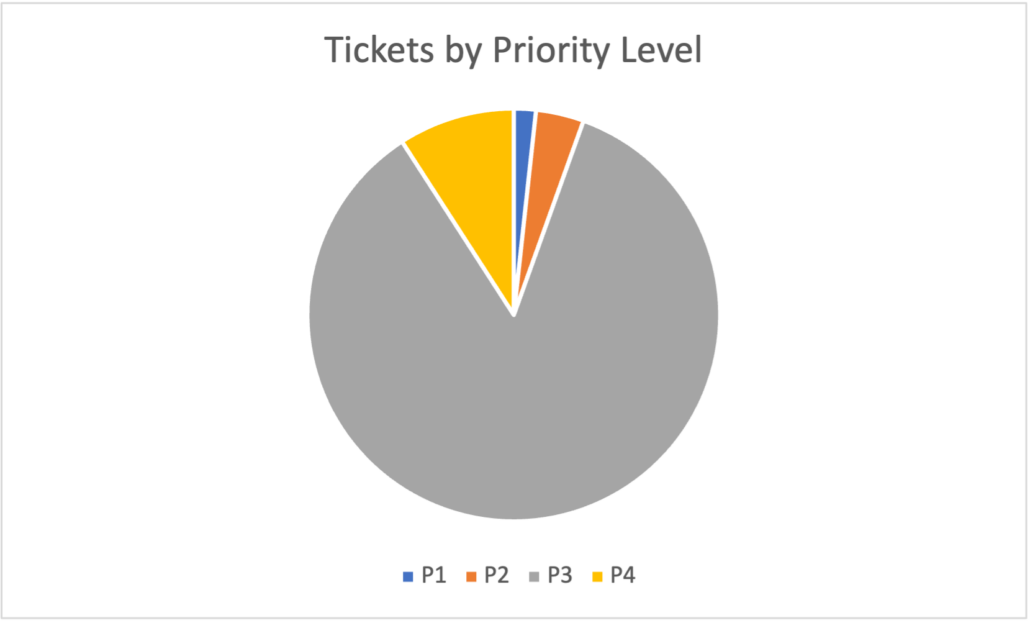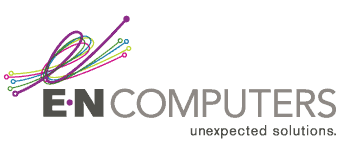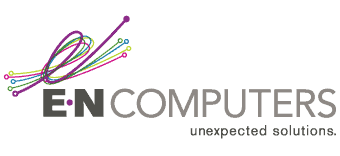

Content Contributor, E-N Computers
7+ years experience in healthcare IT and tech support.
Have you experienced this frustration? You’re working on something important, particularly something with a deadline, and then you have computer trouble. But that frustration gets compounded if you call the help desk and don’t get an answer, acknowledgement, workaround, or resolution in time.
Because technical problems impact user productivity, security, and sometimes take down critical systems, you want to be confident that we will respond promptly. One tool we use to do that is called a service level agreement (SLA).
An SLA is a contract that outlines the level of service we will provide to you. It sets clear expectations of what we will do and how quickly, as well as what actions you should take to receive the best support experience. It creates accountability for both parties, as well as a framework for managing our relationship and resolving disputes.
To show you what that means, let’s look at 1) how you can inform us of problems, 2) how we prioritize tickets, and 3) some of our metrics related to level of service and response times.
QUICK ANSWER:
What is E-N Computers’ response time on support requests?
We maintain a first response time of less than 15 minutes for all tickets. We prioritize them according to impact and urgency, and our average ticket resolution time is about 30 minutes.
How you can inform us of problems
To request support, contact our help desk by phone, email, from the PC agent we install on each of your workstations, or through the customer web portal. After hours, our support number offers an option to leave a message for the on-call technician. If the technician determines the issue is an emergency, it will be followed up on as one. If it is not, it will be handled during normal business hours. After-hours support is billable.
Contact us as soon as possible when you are aware of problems or planned changes. Unfortunately, there have been times where a client failed to inform us of a problem until it worsened, or of a planned change until right before it was to take place. Open communication helps us to properly allocate staff and other resources to you and provide the high level of service we’re proud to offer.
How we prioritize support requests
We prioritize requests based on impact and urgency. There is some discretion involved in deciding the impact and urgency of a problem, but we work with you to determine the correct priority level.
Impact refers to the effect an issue has, the extent of its disruption. It is measured subjectively by considering factors like 1) the number of affected users, 2) which IT systems are involved, and 3) consequences for business operations and finances.
Urgency relates to how quickly the issue must be resolved to minimize business impact.
A priority matrix combines impact and urgency to identify the order in which issues should be handled. Here is our priority matrix.
Priority matrix
| High urgency | Medium urgency | Low urgency | |
|---|---|---|---|
| High impact | Priority 1 | Priority 2 | Priority 2 |
| Medium impact | Priority 2 | Priority 3 | Priority 3 |
| Low impact | Priority 3 | Priority 3 | Priority 4 |
Service goals
| Triage time | Scheduled within | Target Resolution Time | |
|---|---|---|---|
| Priority 1 — Critical | 12 minutes | 30 minutes | 4 hours |
| Priority 2 — High | 12 minutes | 1 hour | 8 hours |
| Priority 3 — Medium | 12 minutes | 2 hours | 3 days |
| Priority 4 — Low | 12 minutes | 4 hours | 1 month |
Issues with both high impact and high urgency are given a priority of 1. Issues that are low impact and low urgency are given a priority level of 4. Other issues fall in between. Consider some examples.
Priority 1 issues are critical because everyone is affected, and work is stopped; we aim to resolve these within 4 hours. Priority 2 could be one person that can’t do any work or everyone having to use a workaround; our goal is to resolve these within 8 hours. These two priority levels are assigned ahead of other work. Priority 3 issues range from one person using a workaround to everyone being affected by an irritation; we try to resolve these within 3 days. Minor issues that only affect one person are assigned Priority 4 and we aim to resolve them within a month — usually during our next onsite visit.
Our Service Manager and Dispatcher proactively monitor customer requests. Automatic rules make sure that they see open issues every 3 to 5 days so that any “stuck” tickets are escalated or re-prioritized.
Our metrics around SLA
Three key metrics that we track in relation to SLA are 1) customer satisfaction, 2) tickets by priority level, and 3) average ticket resolution time.
Customer satisfaction. We think the most revealing metric regarding our support quality, including response time, is customer satisfaction. This number comes from surveys filled out by clients after they have received support.
2022 Score: 9.5/10 (727 reviews)
Tickets by priority level. As discussed above, each ticket is assigned a priority level according to impact and urgency. A high number of P1 tickets would be concerning; there should be few emergencies in a well-managed IT environment. As you can see, the vast majority (85%) of tickets we handle are priority 3, or relatively minor problems — and 96% of those are handled within SLA.

| Priority level | # of tickets | % of tickets | SLA rate |
|---|---|---|---|
| 1 | 89 | 2 | 98 |
| 2 | 194 | 4 | 100 |
| 3 | 4401 | 85 | 96 |
| 4 | 470 | 9 | 100 |
Average ticket resolution time. This is the average amount of time it takes to handle a ticket. Although P3 tickets make up most of our queue, and we have up to 3 days to resolve them, they are generally handled much faster than that.
2022 Score: 34 minutes
Next Steps: Learn More About IT Support
READ: How to hire a help desk
READ: What happens during an onsite day?
Besides response time, you want an enjoyable support experience. When you contact the help desk, you want to know that the person helping you will be qualified and friendly. In our post, How to hire a help desk, find out what we look for to make sure that you have the best experience possible.
Not everything gets handled by the help desk, though. You also need proactive maintenance and documentation to keep your systems in top shape. That’s what our onsite, or focus, days are for. Find more more in our post, What happens during an onsite day?
Take the IT Maturity Assessment

Is your business ready to weather changes, including employee turnover? Find out by taking our IT maturity assessment.
You’ll get personalized action items that you can use to make improvements right away. Plus, you’ll have the opportunity to book a FREE IT strategy session to get even more insights into your IT needs.

Industries
Locations
Waynesboro, VA
Corporate HQ
215 Fifth St.
Waynesboro, VA 22980
Sales: 540-217-6261
Service: 540-885-3129
Accounting: 540-217-6260
Fax: 703-935-2665
Washington D.C.
1126 11th ST. NW
Suite 603
Washington, DC 20001-4366
Sales: 202-888-2770
Service: 866-692-9082
VA DCJS # 11-6604
Locations
Harrisonburg, VA
45 Newman Ave.
Harrisonburg, VA 22801
Sales: 540-569-3465
Service: 866-692-9082
Richmond, VA
3026A W. Cary St.
Richmond, VA 23221
Sales: 804-729-8835
Service: 866-692-9082
